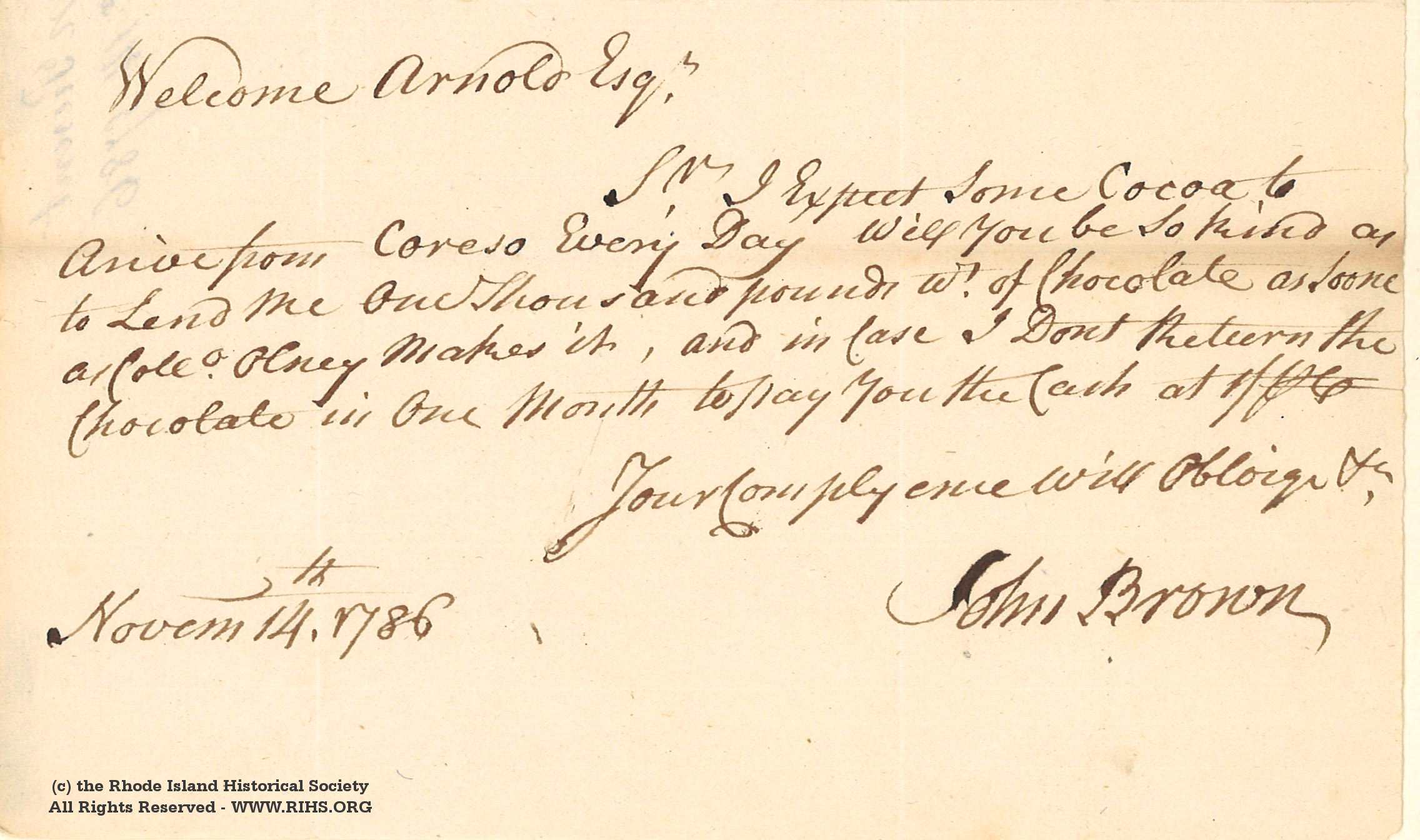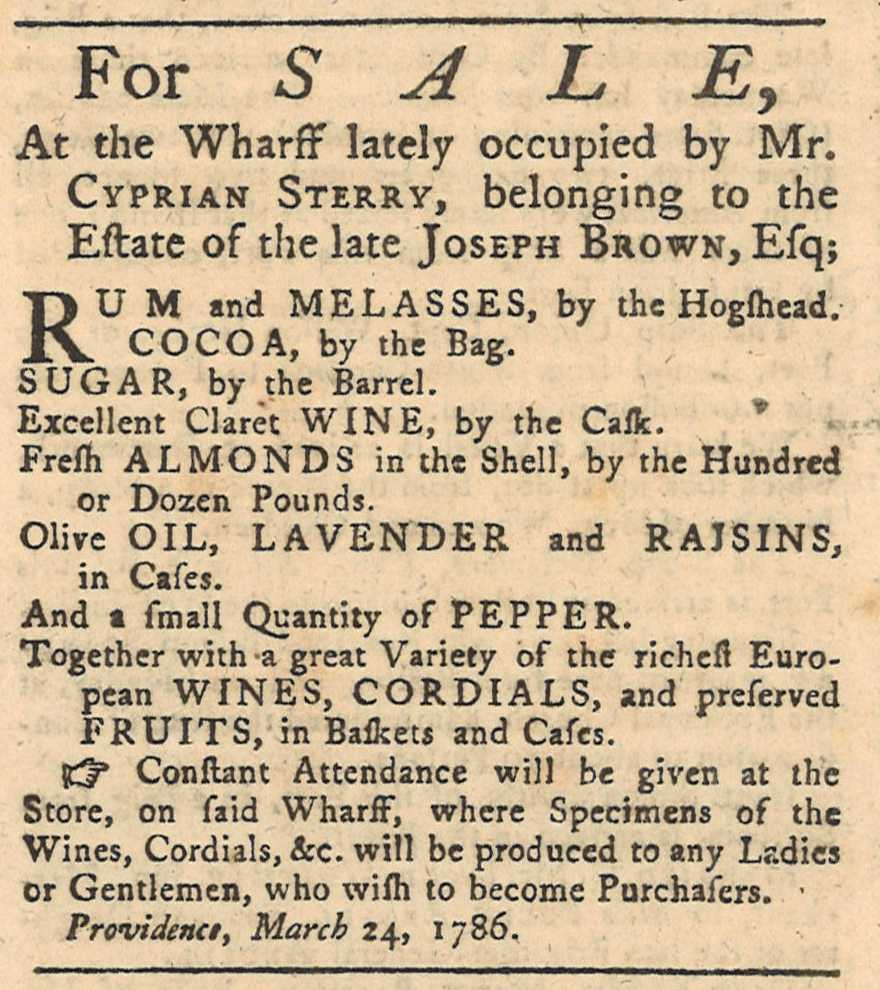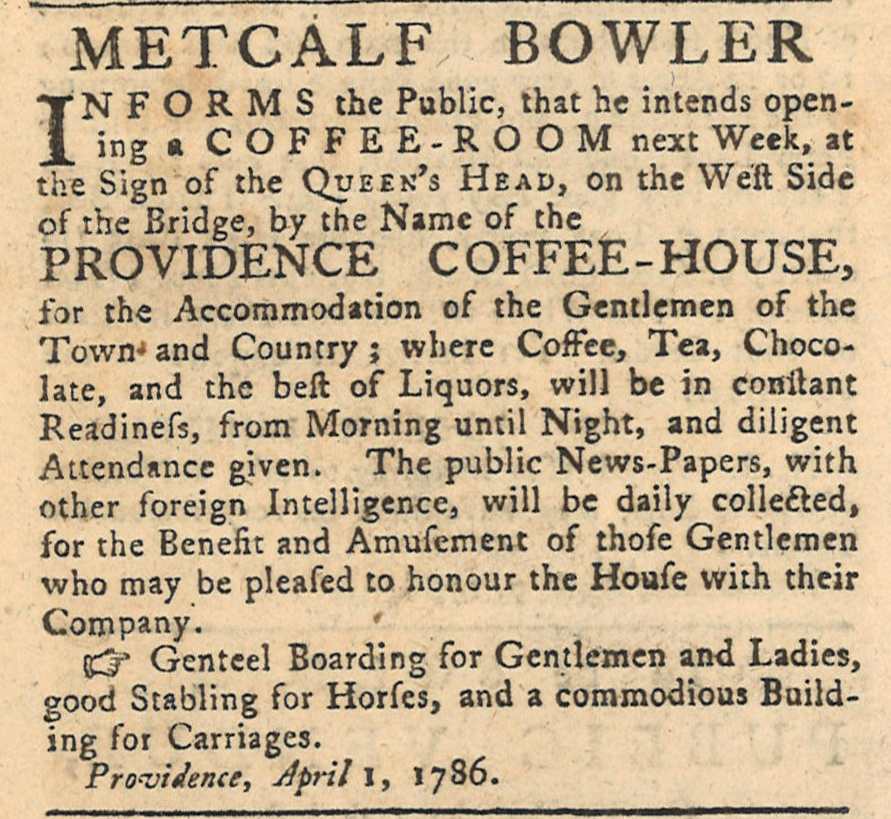What says Valentine’s Day like borrowing a thousand pounds of chocolate? This is one of the few documents found in the RIHS collections that gives evidence the large chocolate industry that took place in Rhode Island in the 18th Century. But very little research has been done on the specifics of the trade and local consumption of this favorite current confection.

The note says Brown would like to collect the chocolate “as soone as Collo. [Colonel] Olney makes it,..” Can we surmise that this is Colonel Jeremiah Olney (1749-1812), Revolutionary War hero [See the Jeremiah Olney Papers, MSS 18]? After the war he managed a farm in Rehoboth, helped start the Providence Theater and ran several cottage businesses. Was he milling chocolate at the farm as well? Another possibility is that he was referring to Jeremiah’s 2nd cousin Coggeshall Olney (1743-1805), but we have very little documentation of his post-war activities.
In the 18th Century, chocolate was served as a beverage, not as a candy. We see from advertisements in the Providence Gazette, printed by John Carter, that while rum and molasses were sold by the hogshead (casks of liquid), cocoa was sold in bags.

One thing was for sure, Rhode Islanders’ taste for chocolate was just beginning. In April of 1786 Metcalf Bowler announced he was to open the Providence Coffee House, offering coffee, tea, and chocolate!


Try using a bar of Heritage Chocolate (from Colonial Williamsburg and other places) to make truly authentic colonial cocoa. It’s different but good.